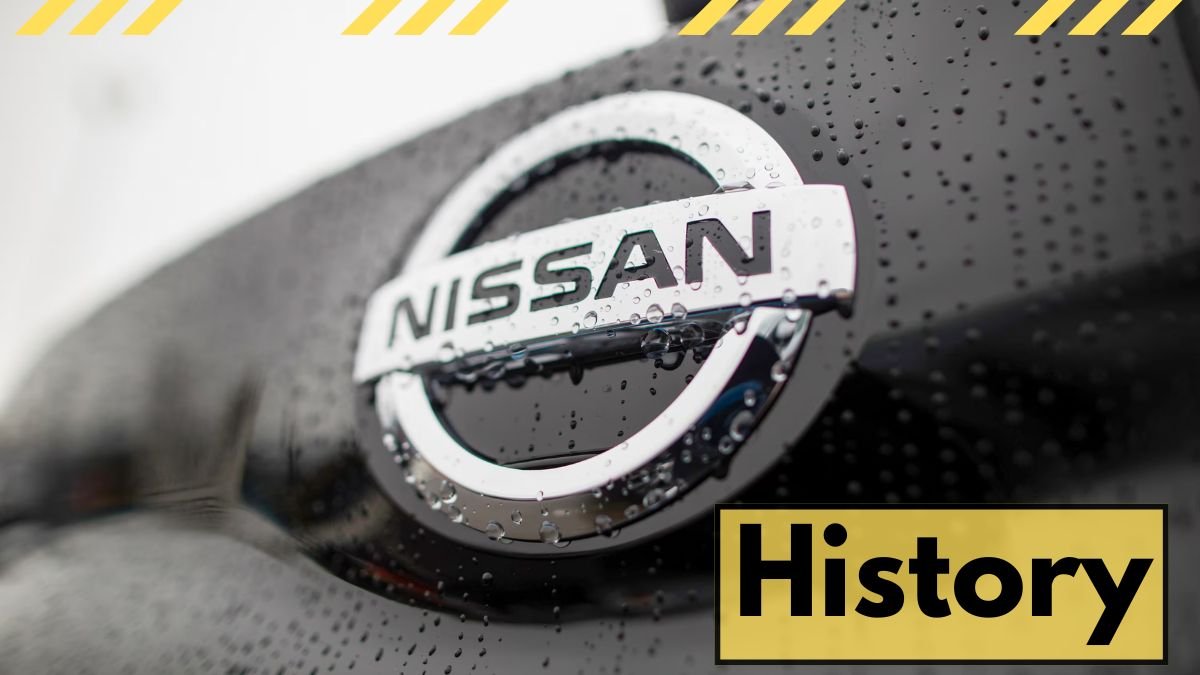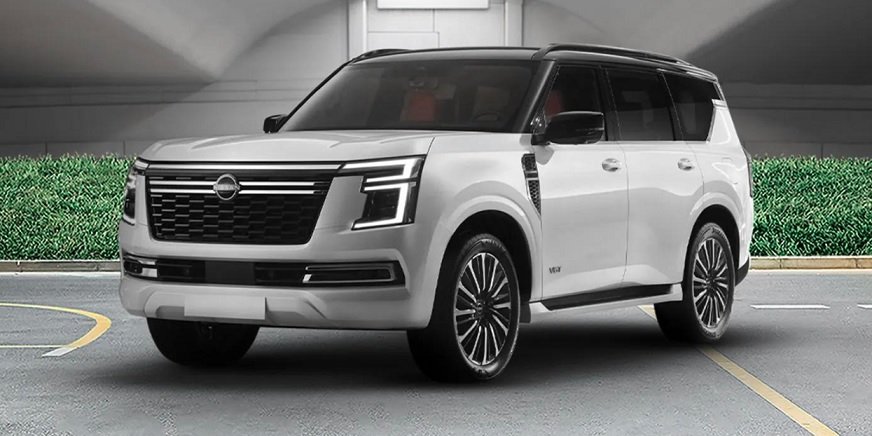Suppose you have a passion for cars and are interested in knowing about the various car companies in the world. In that case, you will know that you cannot know every single car without reading and hearing. The Japanese car company that started in 1914. Today, the company has emerged as the sixth largest automotive manufacturer in the world after top players like Toyota, Volkswagen, Hyundai Motor Group, General Motors, and Ford. Read on to find out about Nissan history, the market challenges, and more!
Overview | Nissan
Nissan Motor Co. stylized and branded as ‘Nissan Motor Corporation’ is a Japanese multinational automobile manufacturer that has its headquarters located in Yokohama, Kanagawa Japan. The company is old enough and its inception dates back to the 20th century when it was called ‘Nissan Group’.
Interestingly, since 1999, the company has been part of the Renault-Nissan-Mitsubishi Alliance. Which is a partnership between the latter two companies of Japan, and Renault from France. In fact as of 2023. Renault holds a 15% voting stake in Nissan and vice versa.
Since 2016, in light of their partnership and alliance, it held a 34% controlling stake in Mitsubishi which gradually reduced to 32% just last year.
It is expected that it will merge with Honda Motor Company in 2026, since the announcement was made for the same on December 2024.
This allows the company to enjoy the sixth position on the list of largest automakers in the world – whilst also being the ninth largest automobile maker globally.
Origins and History
Pre-beginnings with DAT
On 1st July 1911, Masujiro Hashimoto founded the Kwaishinsha Motor Car Works in the Azabu-Hiroo district in Tokyo.
N 1914, this company successfully produced its first car and called it the ‘DAT’ which was an acronym for the names of the investing parties of the company namely
- Kenjiro Den
- Rokuro Aoyama
- Meitaro Takeuchi
However, in 1925, the company was renamed to DAT Jidosha & Co Ltd or just DAT Motorcar Co. The company had produced and built trucks in addition to the DAT and Datsun passenger cars but the majority of its output included trucks, since there was a non-existent market for passenger cars at that time, especially after the 1923 Great Kanto Earthquake, wherein disaster recovery efforts were in full swing.
In 1926, the Tokyo-based DAT Motors successfully merged with the Osaka-based Jitsuyo Jidosha Co. Ltd to become DAT Jidosha Seizo Co Ltd Automobile Manufacturing Co Ltd. with the headquarters located in Osaka until 1932.
In 1931, productions were on the way and DAT came up with a new, small car called the ‘Datsun Type 11’.
Debut of Nissan Name
Back in 1928. Yoshisuke Aikawa successfully found the holding company ‘Nihon Sangyo’. Interestingly, the name ‘Nissan’ originated back in the 1930s as an abbreviation which was used in the Tokyo Stock Exchange for Nihon Sangyo – coming out as ‘NiSa’. The company was Nissan ‘Zaibatsu’ which includes Tobata Casting and Hitachi.
Until 1933, the company did not get into automobile manufacturing although it did control auto parts and foundries.
This ‘zaibatsu’ eventually grew to the point where it included 74 firms and thus emerging as the fourth largest in Japan during World War II. In 1931, DAT Jidosha Seizo collaborated with Tobata Casting which, actually was a Nissan company – thus giving birth to the inception of Nissan’s automobile manufacturing.
Nissan Motors
Aikawa separated the automobile parts of Tobata Casting in 1934 and created a new subsidiary which would be named ‘Nissan Motor Co Ltd’. However, unfortunately for the new company, its shareholders were not very excited about the future of the automobile in the country so Aikawa ended up buying out all the shareholders in Tobata Casting by using the capital from Nihon Industries. During this time, it was under the leadership of Nihon Sangyo and Hitachi effective immediately!
A lot of things were happening at Nissan back in 1945 – the constructions of the Yokohama plant had been completed, 44 Datsuns were being shipped to Asia, Central and South America. The company was building trucks, airplanes, and engines for the Imperial Japanese Army.
Despite all the productions, there were still internal issues taking place about the name change and headquarters change of the company – and in 1940, the first knockdown kits were shipped to Dowa Jidosha Kogyo, one of MHID’s companies.
Change of Headquater
Again in 1944, the headquarters changed from Xinjing which took place for a few years, to Nihonbashi in Tokyo. The company name was changed to Nissan Heavy Industries and the name stuck till 1949.
It might interest you to know that during the Korean War from periods 1950 to 1953, Nissan became a major vehicle producer for the U.S Army. After the end of the war, there were significant levels of anti-communist sentiments that prevailed in various parts of Japan. However, Nissan’s workforce was strong and militant just as the union that had organized it. Unfortunately, the company was going through financial difficulties and when wage negotiations were underway, the company took a hard hit workers were locked out, several hundreds were fired and several union leaders were arrested by the Japanese government with the U.S occupation forces until Shioji Ichiro came into the picture as the brains behind the idea of trading wage cuts against saving 2000 jobs. Ichiro later went on to become the president of the Confederation of Japan Automobiles Workers’ Unions.
Expansion into Foreign Markets and Increased Market Demand
In the 1950s, this comany had decided to expand its brand name into the worldwide markets and the management had realized that their Datsun small car line would fulfill the need in markets such as Australia, and the United States where transport was an ongoing process with a constant need for the same.
By 1957, Nissan had also penetrated the Middle East market when it sold its first car in Saudi Arabia. The company even formed a US subsidiary called ‘Nissan Motor Corporation UUSAin Gardena, California.
By early 1970, the company had managed to become one of the woworld’sargest exporters of automobiles and in the early 1980s, Datsun became the best-selling Japanese brand in Europe.
In 2005, it started its operations in India via its subsidiary Nissan Motor India Pvt Ltd, and along with its global alliance partner Renault. The company invested $990 million to set up a manufacturing facility in Chennai, India thus catering to the Indian market.
Challenges Faced
Back in late 2019, Nissan was going through a patch of financial difficulties and the company had to lay off some 12500 employees over three years, as the company reported a 95% fall in income. The CEO at that time, Hiroto Saikawa had confirmed that the majority of these cuts would include the plant workers.
In 2020, due to the COVID-19 pandemic, the company’s production capacity was down by 20% and in mid that year, Nissan even shut down factories in Indonesia and Spain. It went as far as to pull out of the South Korean market by December of that year due to worsening business environments amid the pandemic and the 2019 boycott of Japanese products in South Korea.
In November of that year, Nissan reported a $421 loss.
In November 2024, It was able to create an emergency plan by cutting its annual operating profit by 70% to 150 billion yen. Nissan planned to cut 9000 jobs and global production capacity by 20% that year.
In December that year, things turned for the better as Nissan had officially announced a Memorandum of Understanding that had been entered with Japanese company Honda. Thus becoming the 3rd largest auto company by sales.
Obstacles and Challenges
- Nissan’s financial difficulties have been going on for sometime and the world is not unknown to its fiscal woes. Despite the ambitious cost-cutting techniques. It is still very much in the red after a long run of alliances, successful expansion into foreign markets etc.
- Nissan’s leadership is in troubled waters as CEO, Makoto Uchida has taken a 50% pay cut as he had acknowledged the company’s failure to anticipate the rapid growth of hybrid and electric cars. The CFO, Stephen Ma is also stepping down thus leaving a critical gap in Nissan’s finances during this rough period. The company has reached its highest-ever debt levels and will be reaching at higher levels by 2026 with an estimate of about $5.6 billion.
- There seems to be trouble brewing in terms of EV models as well – whilst the company was an early pioneer in the Electric Vehicle market with its famous Leaf model, Nissan has since fallen behind competitors like Tesla, Toyota, and Chinese manufacturers. The CEO had admitted that they could not foresee the demand of hybrids.
- Future prospects and Nissan’s survival looks a little rough as it will likely depend on the company’s ability to adapt to the rapidly changing markets. Nissan is however exploring ways to expand it’s EV products and modernize its production facilities but this would require huge investment, which is something Nissan cannot afford currently.
Models
Electric Models
| Model | Price | Features |
| Ariya | INR 40 lakhs | Battery electric car |
| LEAF | INR 30 lakhs | Compact/ small family car |
| Townstar EV | INR 6 lakhs starting | Small electric van |
| Sakura | INR 10 lakhs | All electric Kei-car |
| Clipper EV | INR 30 lakhs | Minicab EV-based van |
Compact Sedans
| Model | Price | Features |
| Micra | INR 6 lakhs starting | Compact Sedan |
| Note | INR 20 lakhs | Compact Sedan |
| Note Aura | INR 20 lakhs | Compact Sedan |
Sedans
| Model | Price | Features |
| Sunny | INR 7 lakhs | Compact Sedan |
| Sentra | INR 8 lakhs starting | Compact Sedan |
| Altima | INR 21 lakhs | Compact Sedan/Mid-size sedan |
| Maxima | INR 31 lakhs | Five-passenger front engine drive sedan |
| Skyline | INR 2 crores | Sports car and Grand Tourer |
SUVS
| Model | Price | Features |
| Rogue/X-Trail | INR 6.12 lakhs | Compact crossover SUV |
| Murano | INR 20 lakhs | Mid-size crossover SUV |
| Pathfinder | INR 45 lakhs | 7 seater SUV |
| Terra | INR 20 lakhs | Mid-size SUV |
Upcoming Models in 2025
| Model | Price | Features |
| Patrol | INR 2 Crores | SUV and off-road vehicle |
| Qashqai | INR 20 lakhs starting | Crossover SUV |
| Terrano 2025 | INR 10 lakhs | Petrol powered SUV |
Conclusion
With all the financial difficulties, obstacles, and of course rough inception period. The Japanese car company has had a rough journey right from its inception up until the merger with Honda. However, this does not mean that it will be backing down anytime soon. The company is all set to bring out its emerging new EV-based models this year. Despite the difficulties, and hopes to come out successful. This goes on to prove that Nissan might have started small. But it has earned its place in the market as one of the most resilient brands in the world.
FAQs
Ans. It was founded in 1914 in Japan.
Ans. Renault Group is the current owner of Nissan Motors.
Ans. The Qashqai, Terrano 2025, and Patrol are some of the upcoming models.
Ans. Although there have been difficulties, it is not expected that Nissan will shut down especially since it is now merged with Honda and Renault.
Ans. The smallest car of the company is priced at INR 4.12 lakhs.



